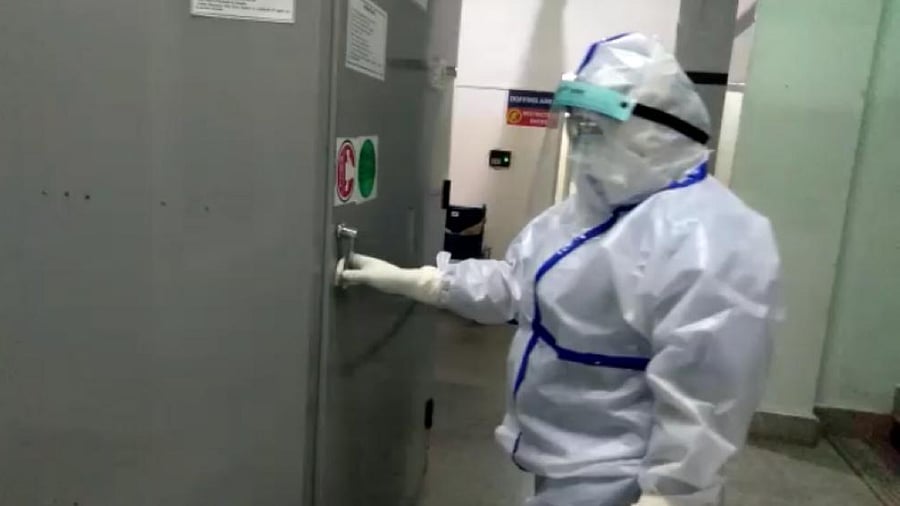
To prevent doctors and paramedics from getting infected while taking off personal protective equipment (PPE), a private hospital in the city has installed an ultraviolet radiation 'sanitisation' chamber outside its Covid-19 ward where healthcare workers have been getting 'sanitised' after their shift for over a month now.
Dr Naresh Shetty, President, MS Ramaiah Hospital at which more than 300 Covid-19 patients are being treated told DH that as many as 200 healthcare workers who work in the Covid-19 ward over three shifts everyday walk into the chamber after their shift and get 'sanitised' before doffing the head-to-toe PPEs.
They also wear face shields and goggles before entering the chamber to protect their face, particularly eyes. Dr Shetty said so far the staff has not reported any skin irritation. The developer of the chamber Ganapuram Venu is a Principal Scientist at the Projects and Business Management Group in the Knowledge and Technology Management Division of National Aerospace Laboratories in the city.
He told DH exposing a used PPE for three seconds to a 254-nanometre wavelength of UV rays would kill four types of microorganisms upto 99.99%. However, he did not personally test the effect of the UV rays on SARS-CoV-2 samples in any virology lab but claims that 'since the microorganisms are more virulent than the SARS-CoV-2 virus, it kills the Coronavirus as well'.
He also did not publish his findings in any peer-reviewed scientific journal. "Getting published in a scientific journal takes a minimum of three months. This chamber wasn't developed for academic interests but to be of use to healthcare workers during the pandemic," Venu said.
Praveen C Ramamurthy, Professor, Department of Materials Engineering, Indian Institute of Science (IISc), told DH, that his lab merely measured the intensity and wavelength of the ultraviolet radiation and that he cannot comment on the safety of exposure to humans.
Dr Shahshank Tripathi, Assistant Professor, Microbiology and Cell Biology Department, Centre for Infectious Disease Research, IISc, told DH, in the absence of published data, it is difficult to comment on the efficacy of such a set-up.
Independent of this set-up, he observed, "Three seconds is too short a time to kill the SARS-CoV-2 virus. Studies have been done with UVC, the highest intensity UV in the range of 220 nanometres. Humans should not be exposed to that. There are no reports for sterilising humans. It is meant for inanimate objects like PPEs or surfaces or air, not humans."
According to a paper published in the American Journal of Infection Control on August 4, high viral loads of SARS-CoV-2 can be inactivated in nine minutes by UVC radiation. On questioning Venu with the above observations, he assured saying, "The UV rays do not penetrate the PPE. We have conducted tests to check this."

